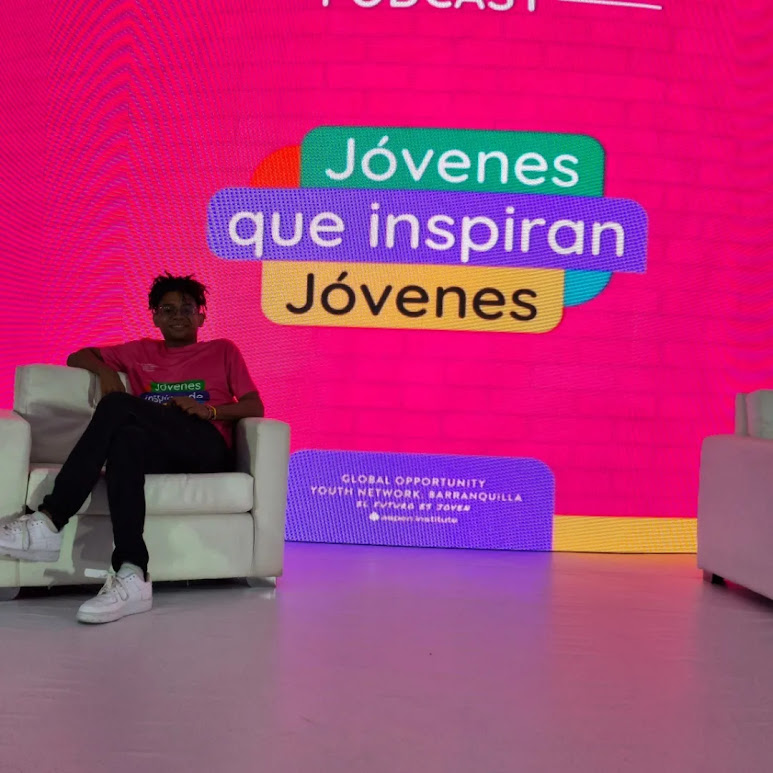By Randy Márquez Ramos
GOYN ALUNIM
Colombia is experiencing a period of heightened political tension. Polarization is growing, trust in institutions is weakening, and citizens—especially youth—have taken political debate to digital spaces. Social media has become a key arena for expression and organization, but also fertile ground for the spread of incendiary narratives: speeches that divide, misinform and demobilize.
What are inflammatory narratives?
These are messages designed to provoke intense emotions like fear, anger, or frustration, and which tend to reduce complex issues to simplistic or false statements. These narratives, which circulate widely on platforms like TikTok, X (formerly Twitter), Instagram, and WhatsApp, are especially amplified during times of political uncertainty, like the one the country is currently experiencing.
In many cases, these discourses do not promote dialogue or collective action, but rather seek to sow distrust, reinforce prejudices, and delegitimize citizen participation. Ultimately, they generate more noise than solutions and deepen the feeling of powerlessness.
Youth and digital participation: between fire and possibility
In this context, Young people are playing a central roleThey represent the majority on digital platforms, have a high capacity for online mobilization, and are directly affected by today's political decisions. However, they are also targets of disinformation campaigns, ideological manipulation, and narratives that portray them as apathetic or violent.
Faced with this situation, digital participation becomes a field of dispute. It can be a space for reproducing conflict and polarization, or a stage where new, more informed, inclusive, and transformative narratives are constructed.
The intergenerational gap: a void that fuels conflict
One of the factors that aggravates this crisis is the lack of intergenerational articulationIn many institutional, community, and even digital spaces, young people lack real channels of dialogue with older generations. While young people seek more horizontal, creative, and disruptive ways of engaging in politics, traditional sectors continue to operate under hierarchical, exclusionary, or paternalistic logics.
This disconnect breeds mutual distrust. Adult generations tend to underestimate or invalidate youth proposals, while young people perceive existing structures as outdated or indifferent. The result is a fragmentation of the democratic fabric: much is said, but little is heard.
The lack of intergenerational bridges prevents building consensus, sharing experiences, and strengthening collective work. And in the digital realm, this division is amplified: each group speaks from its own bubble, with no possibility of meeting.
What can be done about this phenomenon?
Here are some concrete proposals for those who use digital spaces as a tool for political and social participation:
-
Strengthening critical digital literacy: It's not enough to have internet access. It's urgent that more young people learn to identify fake news, verify sources, understand algorithms, and recognize the interests behind certain narratives.
-
Develop counternarratives: Use social media language (reels, threads, memes, audio, illustrations) to promote messages that invite reflection, dialogue, and informed questioning.
-
Creating safe digital communities: Spaces where people can dissent without violence, share diverse experiences, and collectively build proposals from the territories.
-
Connecting the digital with the territorial: Network action must be accompanied by community processes, local leadership, and in-person meetings that translate digital activism into concrete impact.
-
Promoting empathy as a political actIn times of viral hatred, listening to others with respect is a radical act. Empathy doesn't mean agreeing, but it does mean recognizing the humanity of others.
-
Promote intergenerational dialogueDesign spaces where young people and adults can share knowledge, experiences, and strategies to address the crisis. Listening not from an authoritarian perspective, but from a collaborative perspective.
A crisis that is also an opportunity
The current political crisis is not only a threat; it is also an opportunity to rethink how politics is conducted in Colombia. Social media should not only be mirrors of our frustration, but also platforms for imagining and building a more just, informed, and participatory country.
Young people are not excluded from the debate: they are at the center of it. But they cannot do it alone. We need to build bridges between generations, not walls. Because only through mutual recognition and shared action will it be possible to rebuild trust in the collective.
Conclusion:
In an environment marked by incendiary narratives, digital participation must be a tool for transformation, not fragmentation. The task is enormous, but not impossible: to build new narratives based on care, truth, and collaborative action. Because amid the noise, there are still voices that want to build, not destroy.






